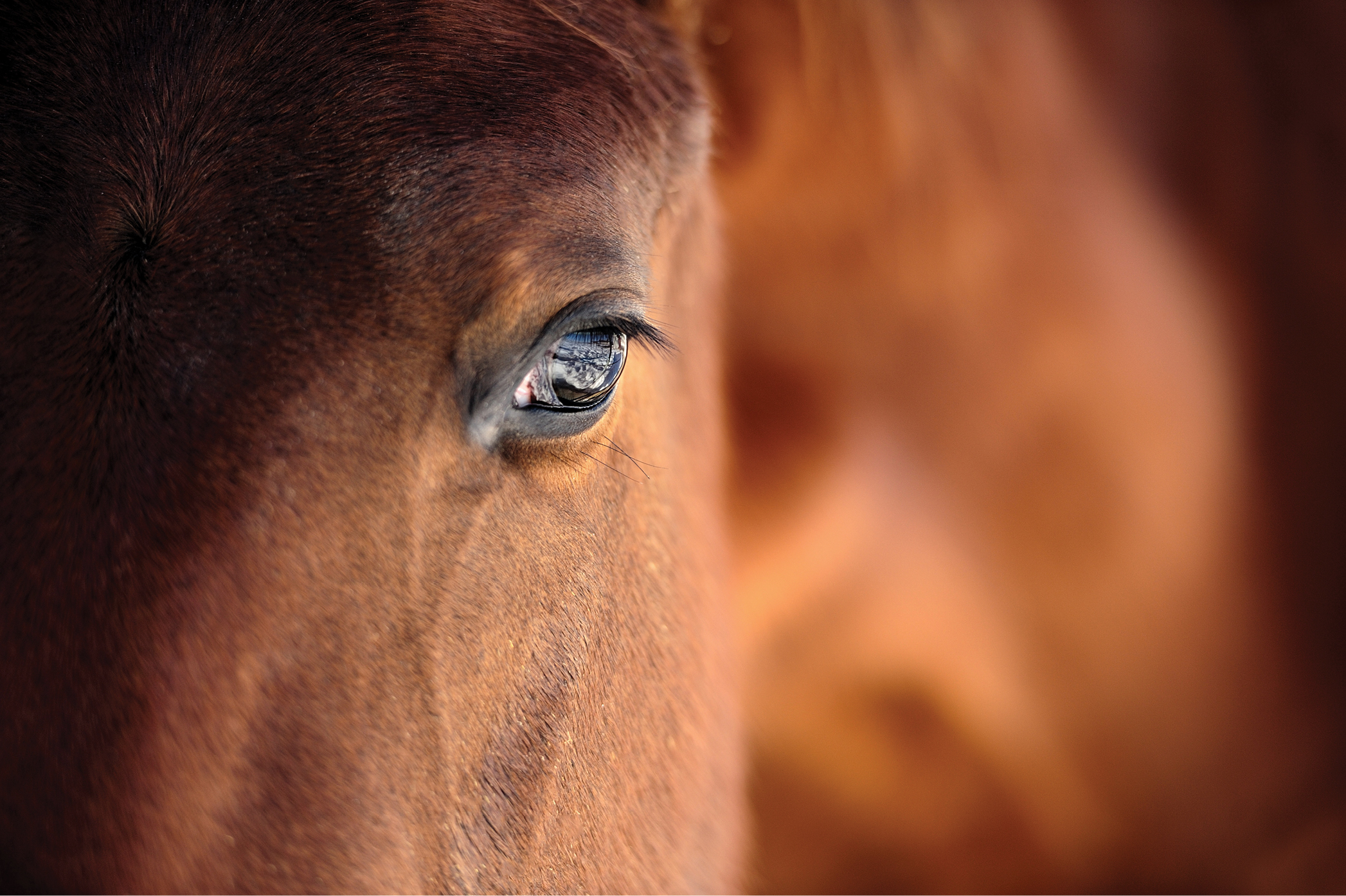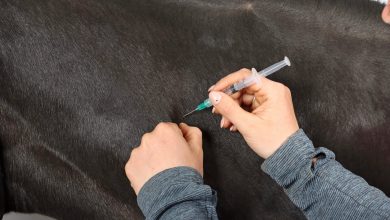What Is Your Vet Thinking?

Learn what goes through your vet’s mind as they come running to help in an emergency.
I was the event veterinarian for a big horse show when my pager went off in the early hours of the morning. ‘We have a colicky horse,’ the message said. ‘We can’t keep him on his feet!’ It was a groom for a trainer I’d never met, and the owner was from a different state. I threw on my clothes and jumped in my truck, wondering how this story would unfold.
What’s the Deal?
As I drove to the horse showgrounds, my brain clicked into overdrive. How bad would this horse be? Can we find the owner? Is the facility set up so I can get my truck in to the barn? And would I be able to perform an adequate exam in the horse’s stall? What about a truck and trailer?
Would there be something available to haul the horse to a referral hospital if his symptoms were severe? And where is my stethoscope anyway?

Did I put it back in the drawer after my emergency last night? By the time I arrived, I had planned for every possible scenario. Are you surprised? Don’t be. Once you call your vet for an emergency and know that help is on its way, you might be thinking, “Whew, problem solved.”
On the flip side, your vet is probably thinking about how they’re going to solve this problem. It’s true that every single time I head out the door to an emergency, I’m thinking through all the possible scenarios, and coming up with alternative courses of action I might need to take depending on the situation.
In this article, I’m going to give you an insider’s look at what goes through your veterinarian’s mind when you call with an emergency. I’ll begin with an overview of what they’re likely to be thinking in every case. Then, I’ll clue you in to some specific concerns they’re probably considering based on the most common emergencies we see. Finally, I’ll help you understand what you can do to help your vet be prepared the next time you make that call.
Emergency 101
If there’s one thing to know about equine emergencies, it’s that none of them look exactly the same. I may have seen a thousand colicky horses, but colic number 1,001 will be just a little different. That said, every emergency requires certain things. As soon as you’ve made that call, chances are your vet will start trying to answer the following five questions:
Question 1: Who’s deciding?
Perhaps one of the most difficult situations is when a horse is in crisis, and the owner can’t be reached. They might be on an airplane, traveling to another country, or simply sleeping soundly with their phone on do not disturb. When I get a call from someone who isn’t the owner, this is a question I’m asking. Who’s going to make decisions for this horse? And how will I navigate the situation if no one takes on that responsibility? In fact, I’ve had to make the call to euthanize a horse before I could reach the owner—only to have them turn into the driveway just as we were finished. Fortunately, it was an owner I knew well, and I felt comfortable making the decision. But what if it had been someone I had never met?
Question 2: What’s the set-up?
If I’m headed to a barn I know, I’ll think about how I’m going to get in the gate (especially in the dark), what would be the best location for working on the specific problem, and where I’m going to park my truck. Is there enough light? Is there running water and easy access to electricity? If I know the facility, I’ll probably ask the caller exactly where the horse is located so I can make my plan. And if I’ve never been there before, I’ll have lots of questions before I arrive.
Question 3: How’s the horse and who’s my handler?
Part of my planning always involves thinking about the individual horse. Is he a barely halter-broke yearling? Or a solid old-timer? How will I restrain him? Your vet may have a technician during the day, but very few of us have easy access to a technician after hours. That means we are often dependent on whomever is present at the emergency to keep us safe. If I know a horse is difficult, a restraint plan and recruiting good help is part of what I’m thinking about as I’m headed to the call.
Question 4: How’s my stock?
My vet truck is well stocked with everything I need to handle most basic emergencies—until it gets used up before I make it back to the clinic on a busy day. And occasionally, I’ll face an unusual situation that requires something special. As I’m driving to every emergency, I’m often running through the equipment, medication, or supplies I think I might need. If I used up the last of a medication, or left a piece of equipment behind somewhere, I might be thinking of alternatives I can use to take care of the problem I’m heading to see. If it’s something I simply can’t do without, I’ll make a plan to get it somehow—whether that means heading back to my clinic to restock or reaching out to a colleague in the area.
Question 5: Is this bill getting paid?
No one likes to think about it, but emergencies are expensive, and your veterinarian is dependent on getting paid. Most of us also hate asking for money when we know you’re stressed because your horse is sick or injured. If I have a solid relationship with an owner and an account set up, this is a worry I can usually set aside. But if it’s someone I’ve never met or the owner can’t be reached, securing a payment arrangement is one of the things I must consider.
Special Events
Colic:
Many veterinarian first responders will break colic cases down into three categories: likely to resolve at home with medical treatment, needs to get to surgery now, and on the fence. And if the horse we’re seeing fits in category two (surgery NOW), time can make the difference between survival and death. To get a horse with a severe colic into surgery as quickly as possible, two questions need to be answered right away: Will the owner take the horse to surgery? And if not, do we have a way to get him there?
If a colic sounds severe over the phone, I’ll usually suggest the caller start thinking about these questions before I even arrive. And for the colic that fits in the on-the-fence category, a trip to the referral hospital might be advisable sooner-than-later just to make sure the horse can be monitored and will be in the right place if things tip that direction. When I’m driving to a colic emergency, I’m thinking about a referral plan should one be needed. My planning might even include shooting off a text or two to people I know who could be available to haul.
Laceration:
Lacerations are probably more variable than any other emergency. And when I’m headed to a cut horse, I’ll have lots of questions. Where is the wound located? How big is it? Is the horse lame? In an ideal scenario, the caller can send a picture to my phone to help me plan. If it’s a tiny little cut on the horse’s shoulder, my brain can take a break. But if it’s a giant, gaping wound running down the back of a hind leg, my planning will go into overdrive.
If a cut horse is very lame, or the wound is deep and located directly over a joint, I’ll have the same potential referral questions running through my mind as I would for a colic.
If it looks like something I can suture at the barn, I’ll probably be making a surgical plan. And if it’s on the hind leg of a difficult horse, I’ll be thinking about how I need to restrain the horse—maybe even planning a location where I can lay him down with short-term anesthesia, or trying to round up a technician who can help.
Down horse:
For a down-horse call, the facility question is often high priority. It seems that most down horses are outside, in the mud, with no water available, and no electricity. (Where I come from, it’s also usually raining). I’ll usually be planning how to get my truck as close as possible. Hoping I can direct the headlights so I can see, and wondering if I left my mud boots in the back of the truck. With a down horse the ‘who’s deciding?’ question is also often top of the list. Many down horses are geriatrics with multiple health problems. If they simply can’t get up, euthanasia is often the kindest choice—and it usually needs to happen quickly.
Severe lameness:
When I’m on my way to a horse that’s holding one leg up in the air, my thought processes usually run to, please let it be a foot abscess. Because if it isn’t, it’s probably something bad. If a non-weightbearing lameness doesn’t sound like an abscess over the phone, my x-ray machine will be on my checklist, and I’ll be planning where I can set it up close to where the horse is located.

How can you help?
Your vet’s job in an emergency begins the minute they answer your call. And thinking through a plan is an important part of every emergency visit. The following five step emergency preparedness strategy can help.
Step 1: Have your own plan in place.
If you own a horse, you’ll have an emergency someday. And chances are it’ll take you by surprise. You may be out of town, or simply unavailable. Make arrangements with a friend, trainer, or barn owner who can call the vet and make important decisions when they’re needed. If you own a truck and trailer, make sure there are keys available and someone who can drive. If you don’t, have a list of friends or even commercial shippers who can help in an emergency. Post your regular veterinarian’s contact information on your horse’s stall.
[Learn How to Handle an Emergency]Step 2: Know your vet.
Having a good relationship with your regular veterinarian is one of the most important things you can do to protect your horse in an emergency. If your vet knows you, your horse, and your facility, not only will they come running when they’re needed, they’ll be much better prepared to plan for how to best take care of your horse.
Step 3: Handle your horse.
Emergencies aren’t the time to train your horse. Make sure your youngsters are halter broke, work through needle-shyness or other difficult behaviors before emergency strikes. And teach your horse to load. Your vet will appreciate it, and your horse will get better care.
Step 4: Be prepared when you call.
When your vet starts asking questions, be prepared to answer. Most important, don’t be annoyed or impatient. Your vet can be much more efficient and able to give your horse the best care possible if they get all those questions answered before they arrive.
Step 5: Have a payment plan.
If you have insurance, make sure you have that information available. If not, consider having a cash reserve set aside to cover costs, especially for a bad (and probably expensive) emergency. Be aware that many referral hospitals will require a deposit before they’ll even start working on your horse. Emergencies are stressful enough without worrying about how you’ll pay your bill.
What happened with my colicky horse at the horse show? He did, in fact, need surgery, but the story had a happy ending. Even though the owner was far away, she was well prepared with a team of people at the ready to haul him to the referral hospital. And she was prepared to pay the bill. In large part because of her good planning, he’s back at home and doing well.



